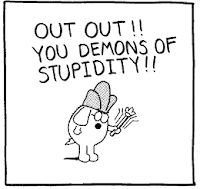Branding the Philippines: learning from the Singapore experience
 Singapore's survival as a resource-poor country depended on intellectual-capital-applied rather than on hawking raw materials and minerals to the rest of the world ad infinitum (a mindset that impoverishes countries like the Philippines). Here is an excerpt from a piece written by management expert Tom Peters which I cited in my book.
Singapore's survival as a resource-poor country depended on intellectual-capital-applied rather than on hawking raw materials and minerals to the rest of the world ad infinitum (a mindset that impoverishes countries like the Philippines). Here is an excerpt from a piece written by management expert Tom Peters which I cited in my book.Management guru Tom Peters wrote in his rant paper “Project 05” in the summer of 2005:So “all this” is a “story,” short and sweet, about “intellectual capital added” (brand value, design excellence, cool … in this instance). There’s a special irony to this particular story: Why was I back in Singapore in March 2004? Answer: to speak at Singapore’s (first ever!) “global branding conference,” sponsored by the Singaporean government and ad giant/PSF Ogilvy & Mather. The point of that conference is the point of this paper: Singapore, as I observed earlier, needed to … Race Up The Value-Added Chain. And the answer, at least in part, is becoming … Brand Singapore, “Cool Singapore,” or some such. Hence the conference.
Senior Minister K.Y. Lee (former PM Lee), architect of Singapore’s awesome transformation, addressed our group, and acknowledged that Singapore had achieved its exalted status by becoming Southeast Asia’s hub of “operational excellence.” Singapore does it right! (Or some such.) But he also acknowledged, the reason for his invitation and presence at the conference, that Singapore, now, had to be … and he almost cringed as he said it … “COOL .” Thence “the” “Brand Singapore” conference.
There is no Filipino brand and no “Philippines Inc.” The Philippines has no brand equity to speak of. Our cuisine, as shown in the previous examples, is virtually unknown and unmarketable globally. Chinese, Thai, and Indian individuals, by sole virtue of their being Chinese, Thai, and Indian, can set up a restaurant in any corner of the world and can easily command an immediate following. The very words, "Chinese", "Thai", and "Indian" placed before the word "restaurant" by themselves already add value, just like Picasso (as the unverified story goes), carried around a pen and a doodle pad instead of a credit card or chequebook whenever he went out shopping.
The Inquirer.net Editor got it right this time when he wrote in today's Op-Ed (referring to that old and much-loved tourism slogan "Wow Philippines"):
To get the wow, one has to earn the wow. In that sense, the DOT has a lot more to do than merely change its slogan or, for that matter, offering up a new website.
Generally speaking, the DOT needs to do a much better job with its maintenance of various crumbling tourist spots and protection of the country’s natural treasures. Maybe if the DOT were already doing those things well, people wouldn’t mind the bizarre new slogan, no matter how wayward it is. [My boldface for emphasis]
As they say when one goes out to meet chicks:
It is usually the ones who are heavily made-up that you need to be wary of.




The last two sentences made me laugh but the point is true. As I commented in Anti-Pinoy, our tourism makeup and any country's for that matter, depends on 1) heritage 2) current situation and 3) potential. Our heritage is confused and confusing. Our current situation is a mess. All Noynoy thinks of our potential is dreaming again while strolling on a straight path. What's that about anyway?!
ReplyDeleteLast time I checked, Boracay was still THE BEST BEACH IN THE WORLD!
ReplyDeleteSez who? Masses of Pinoy flying voters on websites? Boracay is a pain in the ass to get to, hugely overpriced, and overrun by hookers and drunken twenty-somethings. I don't care if the beach was paved in gold, you oversell something and it becomes a shithole pretty quickly.
ReplyDelete